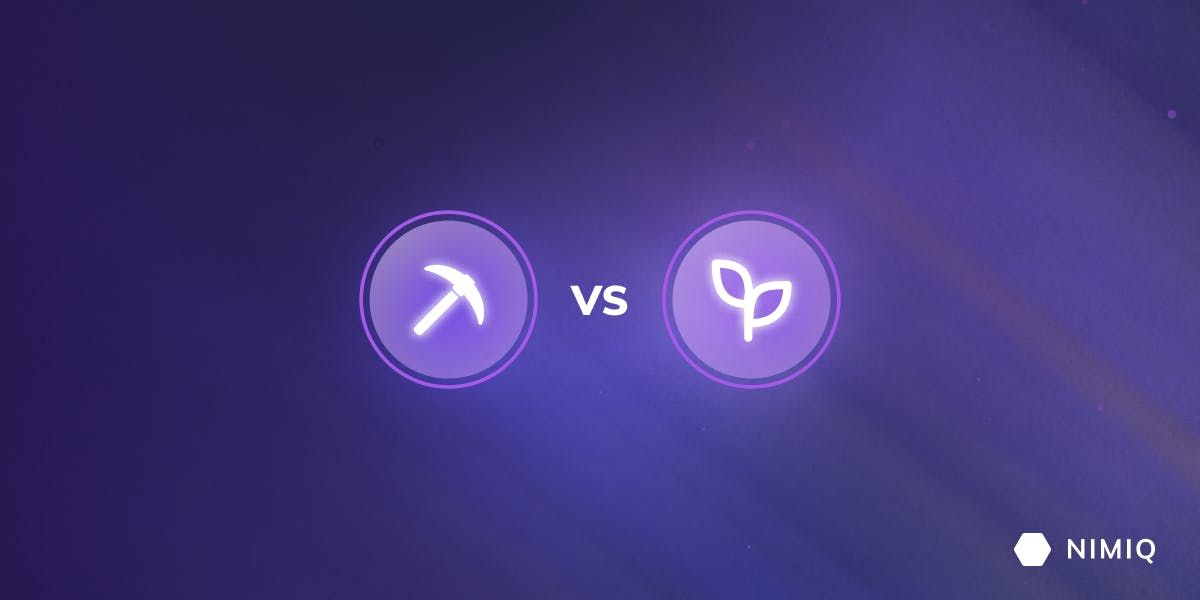What are the Benefits of Proof of Stake?
Better Performance
Currently, with Proof of Work, Nimiq can handle a maximum average of 10 transactions per second. This number is not sufficient for supporting large-scale usage and is a well-known limitation of Bitcoin. With Nimiq's new Proof of Stake approach, this capacity will skyrocket to 1'000+ transactions per second! This means more users can transact simultaneously without slowing down the network and without increasing network fees per transaction under heavy usage. This opens the doors for mass adoption of Nimiq in true peer-to-peer on-chain format.
Better Energy Efficiency
Proof of Work relies on a process called "mining," which consumes a lot of energy. In contrast, Proof of Stake eliminates the need for such high energy-consuming computations, making Nimiq much more environmentally friendly.
Faster Transactions
Right now under Proof of Work, transactions can take over a minute to be received, which might not seem like much. But if you're paying for something quick, like a coffee, that wait can be frustrating. With Proof of Stake, transactions will be confirmed in just a few seconds, making everyday payments faster and smoother for everyone.
Staking NIM
One of the most exciting changes with this migration is the ability to easily stake your NIM. Staking is the process of locking up your NIM to help secure the network, and in return, you get staking rewards. This creates a great incentive to acquire and hold NIM, as holders can receive passive rewards simply by participating in the staking process.
In short: Nimiq’s transition to Proof of Stake will make the network faster, more environmentally friendly, and let every user stake NIM to receive NIM rewards—creating a better overall experience for users, all the while not compromising decentralization.

